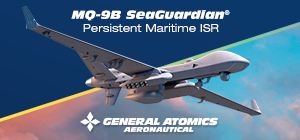.jpg)
Lockheed Martin has announced that it has conducted the first launch test of the Joint Air-to-Ground Missile (JAGM) from a new quad launcher (JQL – JAGM Quad Launcher, pronounced “jackal”), specifically designed for vertical launch operations.
The test took place at the Yuma Proving Ground in Arizona and confirmed the full integration between the missile and the launcher, culminating in the first operational firing. As Lockheed Martin stated in its official release: “The test was successful, with a direct hit on a stationary ground target and the collection of real-time data on missile ignition, launch, and flight through impact. The demonstration was conducted with the JQL positioned at 45°, highlighting the system’s flexibility and its potential for different operational applications.”
The primary objective of the campaign was to explore the potential use of the JAGM in a Counter-Unmanned Aerial Vehicle (C-UAV) role. The company aims to open new commercial opportunities in the rapidly expanding anti-drone defense market — particularly in the naval domain — despite the missile’s non-negligible cost.
With an average unit cost of $212,000 (2022 data), the JAGM is far from cheap, but it remains significantly more affordable than high-end interceptors such as PATRIOT or SM-6. This price factor could justify its use — and proliferation — against medium-sized UAVs, providing layered protection for medium and large naval platforms.
The test also marked the first time a JAGM was launched from 4 independent modular canisters, demonstrating the system’s high versatility and adaptability to different operational contexts. The JQL Canister System is designed to allow the rapid reloading of individual cells following standard procedures, thereby significantly improving operational efficiency.
One of the main challenges of vertical launch systems lies in the management of high-temperature exhaust gases, which can cause severe issues on ship decks. Drawing on experience gained from the Mk-41 Vertical Launching System (VLS) and the US Army’s TYPHON program, Lockheed Martin addressed this by integrating an advanced gas management and mechanical structure into the JQL. Specifically, an integrated exhaust duct within the launcher’s structure (as visible in official imagery) safely dissipates thermal flows during vertical launch. This configuration enables above-deck installation on small to medium-sized vessels and ground vehicles, while also enhancing system reliability and survivability in operational environments.
A new live-fire test is scheduled for November, this time against an aerial target (UAV in flight). Meanwhile, the company has already confirmed ongoing discussions with potential international customers.








.png)
